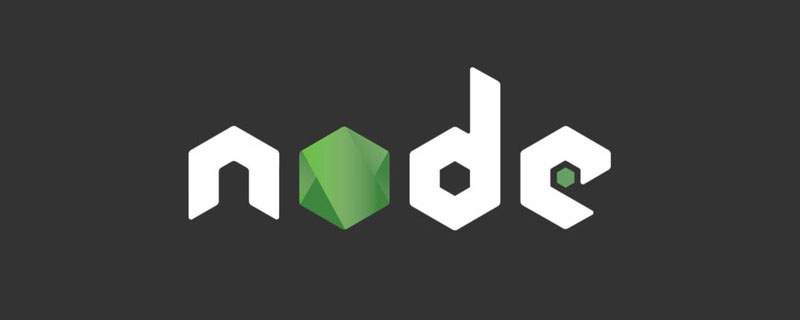缓存是什么?用node怎么实现?
浏览器缓存是前端优化的一个重要方向,通过缓存静态资源,可以减少页面的加载时间和减轻服务器负担,提高用户体验。本文将介绍浏览器缓存的基本原理和常见的缓存策略,并用 nodejs的 koa 框架下的代码实现。

缓存原理
浏览器缓存的基本原理是将静态资源(如 CSS、JavaScript、图片等)缓存到本地,当页面再次请求这些资源时,直接从本地获取,而不是重新从服务器下载。这可以减少页面的加载时间和减轻服务器负担,提高用户体验。
在 HTTP 协议中,浏览器缓存可以通过两种机制实现:强缓存和协商缓存。【相关教程推荐:】
强缓存
-
Expires字段:
- 值为服务端返回的到期时间,可能因为服务端和客户端时间不同而造成缓存命中误差
-
Cache-Control(替代方案)
public:所有内容都被缓存(客户端和代理服务器都可被缓存)
private:只缓存到私有缓存中(客户端)
no-cache:与服务端确认返回的响应是否被更改,然后才能使用该响应来满足后续对同一个网址的请求。因此,如果存在合适的验证令牌 (ETag),no-cache 会发起往返通信来验证缓存的响应,如果资源未被更改,可以避免下载。
no-store:值不缓存
must-revalidation/proxy-revalidation:如果缓存内容失效,则请求必须发送到服务器已进行重新验证
max-age=xxx:缓存内容在xxx秒后失效,这个选项只能在http1.1使用, 比last-Modified优先级更高
-
last-Modified(上次修改日期)
last-Modified:保存于服务器中,记录该资源上次修改的日期(不能精确到秒,如果在数秒内多次修改,可能会导致错误命中缓存)
if-modified-since:保存于客户端中,请求被携带并与服务端的last-Modified比较,相同则直接命中缓存返回304状态码
koa实现强缓存
const Koa = require('koa');
const app = new Koa();
// 设置 expires方案
const setExpires = async (ctx, next) => {
// 设置缓存时间为 1 分钟
const expires = new Date(Date.now() + 60 * 1000);
ctx.set('Expires', expires.toUTCString());
await next();
}
// Cache-Control方案(优先执行)
const setCacheControl = async (ctx, next) => {
// 设置缓存时间为 1 分钟
ctx.set('Cache-Control', 'public, max-age=60');
await next();
}
// Last-Modified方案
const setLastModified = async (ctx, next) => {
// 获取资源最后修改时间
const lastModified = new Date('2021-03-05T00:00:00Z');
// 设置 Last-Modified 头
ctx.set('Last-Modified', lastModified.toUTCString());
await next();
}
const response = (ctx) => {
ctx.body = 'Hello World';
}
// 跟Last-Modified方案相对应
const lastModifiedResponse = (ctx) => {
// 如果资源已经修改过,则返回新的资源
if (ctx.headers['if-modified-since'] !== ctx.response.get('Last-Modified')) {
response(ctx)
} else ctx.status = 304;
}
app.get('/getMes', setExpires, response);
app.listen(3000, () => console.log('Server started on port 3000'));协商缓存(浏览器和服务器通过一个值进行协商判断)
Etag/if-None-Match
- Etag:服务器根据请求的资源计算一个哈希值(也可以是其他算法,代表一个资源标识符) 并返回给浏览器,下次浏览器请求该资源时通过if-None-Match字段将Etag发送给服务器

Last_Modified和if-Modified-Since
last-Modified:保存于服务器中,记录该资源上次修改的日期(不能精确到秒,如果在数秒内多次修改,可能会导致错误命中缓存)
if-modified-since:保存于客户端中,请求被携带并与服务端的last-Modified比较,相同则直接命中缓存返回304状态码
协商缓存ETag和Last-Modified区别:
ETag 是服务器为资源分配的唯一标识符,而 Last-Modified 是服务器报告的资源的最后修改时间。
ETag 可以使用任何算法生成,例如哈希,而 Last-Modified 只能使用特定的时间格式(GMT)。
ETag 的比较是强验证器(exact-match validator),需要完全匹配,而 Last-Modified 的比较是弱验证器(weak validator),只需要在同一秒钟内相同即可。
ETag 适用于所有类型的资源,而 Last-Modified 只适用于不常更改的资源,例如图片、视频等。
对于经常更新的资源,ETag 更适合,因为它可以更准确地检测资源是否已经被修改;而对于不经常更新的资源,Last-Modified 更适合,因为它可以减少服务器负载和网络流量。
koa实现协商缓存
const Koa = require('koa');
const app = new Koa();
// 设置 eTag方案
const setExpires = async (ctx, next) => {
// 设置缓存时间为 1 分钟
const maxAge = 60;
ctx.set('Cache-Control', `public, max-age=${maxAge}`);
// 设置 ETag 头
const etag = 'etag-123456789';
ctx.set('ETag', etag);
await next();
}
// Last-Modified方案
const setLastModified = async (ctx, next) => {
// 设置缓存时间为 1 分钟
const maxAge = 60;
ctx.set('Cache-Control', `public, max-age=${maxAge}`);
// 设置 Last-Modified 头
const lastModified = new Date('2021-03-05T00:00:00Z');
ctx.set('Last-Modified', lastModified.toUTCString());
await next();
}
const response = (ctx) => {
ctx.body = 'Hello World';
}
// 跟Etag方案对应
const etagResponse = (ctx) => {
// 如果 ETag 头未被修改,则返回 304
if (ctx.headers['if-none-match'] === ctx.response.get('ETag')) {
ctx.status = 304;
} else ctx.body = 'Hello World';
}
// 跟Last-Modified方案相对应
const lastModifiedResponse = (ctx) => {
// 如果资源已经修改过,则返回新的资源
if (ctx.headers['if-modified-since'] !== ctx.response.get('Last-Modified')) {
response(ctx)
} else ctx.status = 304;
}
app.get('/getMes', setExpires, response);
app.listen(3000, () => console.log('Server started on port 3000'));koa使用哈希计算Etag值:
const Koa = require('koa');
const crypto = require('crypto');
const app = new Koa();
// 假设这是要缓存的资源
const content = 'Hello, world!';
app.use(async (ctx) => {
// 计算资源的哈希值
const hash = crypto.createHash('md5').update(content).digest('hex');
// 设置 ETag 头
ctx.set('ETag', hash);
// 判断客户端是否发送了 If-None-Match 头
const ifNoneMatch = ctx.get('If-None-Match');
if (ifNoneMatch === hash) {
// 如果客户端发送了 If-None-Match 头,并且与当前资源的哈希值相同,则返回 304 Not Modified
ctx.status = 304;
} else {
// 如果客户端没有发送 If-None-Match 头,或者与当前资源的哈希值不同,则返回新的资源
ctx.body = content;
}
});
app.listen(3000);缓存执行流程:
强缓存未失效,从缓存中读取数据,cache-control优先级高于last-Modified
强缓存失效,执行协商缓存,Etag的优先级会高于last-Modified
缓存未失效服务器返回304状态码,客户端从缓存中读取数据
缓存已失效则返回资源和200状态码
强缓存和协商缓存的使用?
强缓存通常在浏览器中缓存静态资源(如 CSS、JavaScript、图片等),以减少页面的加载时间和减轻服务器负担。
协商缓存通常用于缓存动态资源(如 HTML 页面、API 数据等),以减少服务器的负担和网络带宽的消耗。
在实际应用中,强缓存和协商缓存可以单独使用或一起使用。对于一些静态资源,可以只使用强缓存;对于一些动态资源,可以只使用协商缓存;对于一些经常变化的资源,可以使用强缓存和协商缓存结合使用,既可以减少服务器的负担,也可以保证及时获取到最新的资源。
结语
虽然是用后端nodejs实现,但是我认为前端也应该多多少少了解一下这方面的知识,以便于后端更好的进行交互。后面会讲前端如何实现?
更多node相关知识,请访问:!
以上就是缓存是什么?用node怎么实现?的详细内容,更多请关注本站点其它相关文章!
本文地址:https://www.stayed.cn/item/27711
转载请注明出处。
本站部分内容来源于网络,如侵犯到您的权益,请 联系我

我的博客
人生若只如初见,何事秋风悲画扇。
我的标签
随笔档案
- 2024-02(2)
- 2023-06(1)
- 2023-05(1)
- 2023-04(14)
- 2023-03(3)
- 2023-01(6)
- 2022-12(5)
- 2022-11(5)
- 2022-07(2)
- 2022-06(4)
- 2022-05(3)
- 2022-03(1)
- 2021-12(6)
- 2021-11(1)
- 2021-10(3)
- 2021-09(5)
- 2021-07(5)
- 2021-02(2)
- 2021-01(7)
- 2020-12(18)
- 2020-11(14)
- 2020-10(12)
- 2020-09(10)
- 2020-08(22)
- 2020-07(2)
- 2020-06(1)
- 2020-04(5)
- 2020-03(9)
- 2020-02(7)
- 2020-01(9)
- 2019-12(8)
- 2019-11(10)
- 2019-10(11)
- 2019-09(17)
- 2019-08(16)
- 2019-07(6)
- 2019-06(3)
- 2019-04(1)
- 2019-03(8)
- 2019-02(5)
- 2019-01(1)
- 2018-11(2)
- 2018-10(3)
- 2018-09(1)
- 2018-08(3)
- 2018-07(3)
- 2018-06(7)
- 2018-04(4)
- 2018-03(5)
- 2018-02(4)
- 2018-01(22)
- 2017-12(3)
- 2017-11(5)
- 2017-10(15)
- 2017-09(26)
- 2017-08(1)
- 2017-07(3)